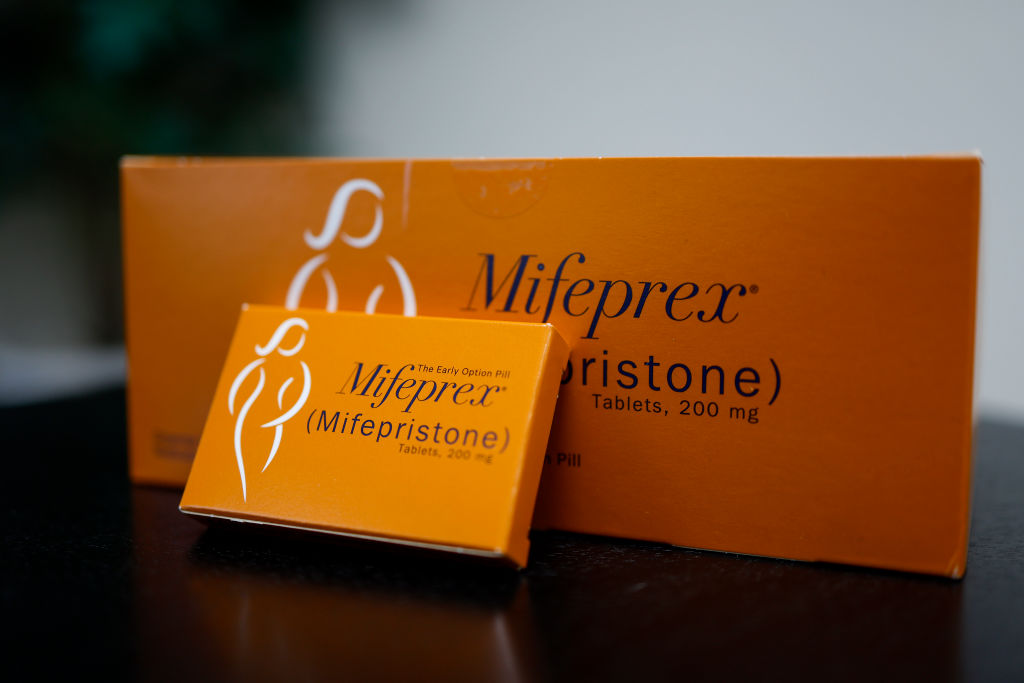Telehealth and the availability of abortion pills by mail have expanded abortion access—but inequalities persist.

Since the fall of Roe one year ago, abortion access has been banned in 13 states and counting, at least 66 clinics have stopped providing abortion, and thousands of lives have been disrupted.
Research comparing the average number of abortions per month in April and May of 2022 (before the Dobbs decision) to the number of abortions per month from July 2022 through March 2023 (after the Dobbs decision) reports that there were 25,640 fewer clinic-based abortions in the months that followed the Supreme Court’s ruling.
For some, this has meant being turned away from clinics and hospitals, forced to travel to another state and fundraise the egregious cost of out-of-state care. For others, this has meant continuing a pregnancy despite being denied a wanted abortion—a direct result of abortion restrictions that can have profound social, economic and health-related implications. State abortion bans have stripped people of the power to make their own decisions about their reproductive health and well-being.
Because of these bans, we know many people have found essential care by purchasing medication abortion pills online and having them delivered by mail.
- Post-Dobbs, there has been a 137 percent increase in virtual-only telehealth clinic abortions.
- Requests to the online telemedicine organization Aid Access increased by 160 percent in the months that followed the ruling.
Innovations in telehealth abortion have proved crucial in this time. Telehealth provision of medication abortion—using mifepristone and misoprostol, or misoprostol-only—provided both within and outside the formal health care system, are proven highly safe and effective. Both healthcare providers and patients have positive experiences providing and using telehealth medication abortion. If state bans on telehealth provision of medication abortion didn’t exist, even more women of reproductive age, 3.5 million more, could access abortion.
But despite these innovations and their potential to vastly increase access, structural inequalities persist. As we continue into the post-Dobbs future, we must address them.
These services fill a critical gap left in states where—for the next several decades—there may be no clinical options for abortion care.
In states where telehealth provision of medication abortion is legal, pills are still expensive, insurance coverage and reimbursement are complicated, restrictions on public insurance coverage remain and adolescent minors are often denied access. In circumstances of intimate partner violence and increased surveillance, people may not be able to safely receive abortion pill packages at their homes or privately have a telehealth consultation. Access may also be limited for people who lack internet connectivity, a permanent mailing address or have limited English language proficiency.
In states where telehealth provision of medication abortion is not legal per state law and people source abortion pills via Aid Access, Las Libres or online pharmacies, cost remains a barrier and criminalization looms—especially for those who have already been criminalized and surveilled while seeking reproductive care for years.
The ongoing battle in Alliance for Hippocratic Medicine vs. Food and Drug Administration (FDA) seeks to withdraw the FDA approval of mifepristone and could potentially restrict the mailing of medication abortion pills.
In the face of an abortion access landscape that has been decimated, telehealth innovations are an essential avenue for finding and using abortion pills.
But we cannot lose sight of the inherent inequalities. These services fill a critical gap left in states where—for the next several decades—there may be no clinical options for abortion care. The time is now to fight and remove all barriers to the services people will need to rely on for years to come.
A note from Ms. editors: Medication abortion is legal, safe and available in all 50 states. The organization Plan C has a comprehensive guide to finding abortion pills on their website, which is continually updated and has all the latest information on where to find abortion pills from anywhere in the U.S.
Up next:
U.S. democracy is at a dangerous inflection point—from the demise of abortion rights, to a lack of pay equity and parental leave, to skyrocketing maternal mortality, and attacks on trans health. Left unchecked, these crises will lead to wider gaps in political participation and representation. For 50 years, Ms. has been forging feminist journalism—reporting, rebelling and truth-telling from the front-lines, championing the Equal Rights Amendment, and centering the stories of those most impacted. With all that’s at stake for equality, we are redoubling our commitment for the next 50 years. In turn, we need your help, Support Ms. today with a donation—any amount that is meaningful to you. For as little as $5 each month, you’ll receive the print magazine along with our e-newsletters, action alerts, and invitations to Ms. Studios events and podcasts. We are grateful for your loyalty and ferocity.





